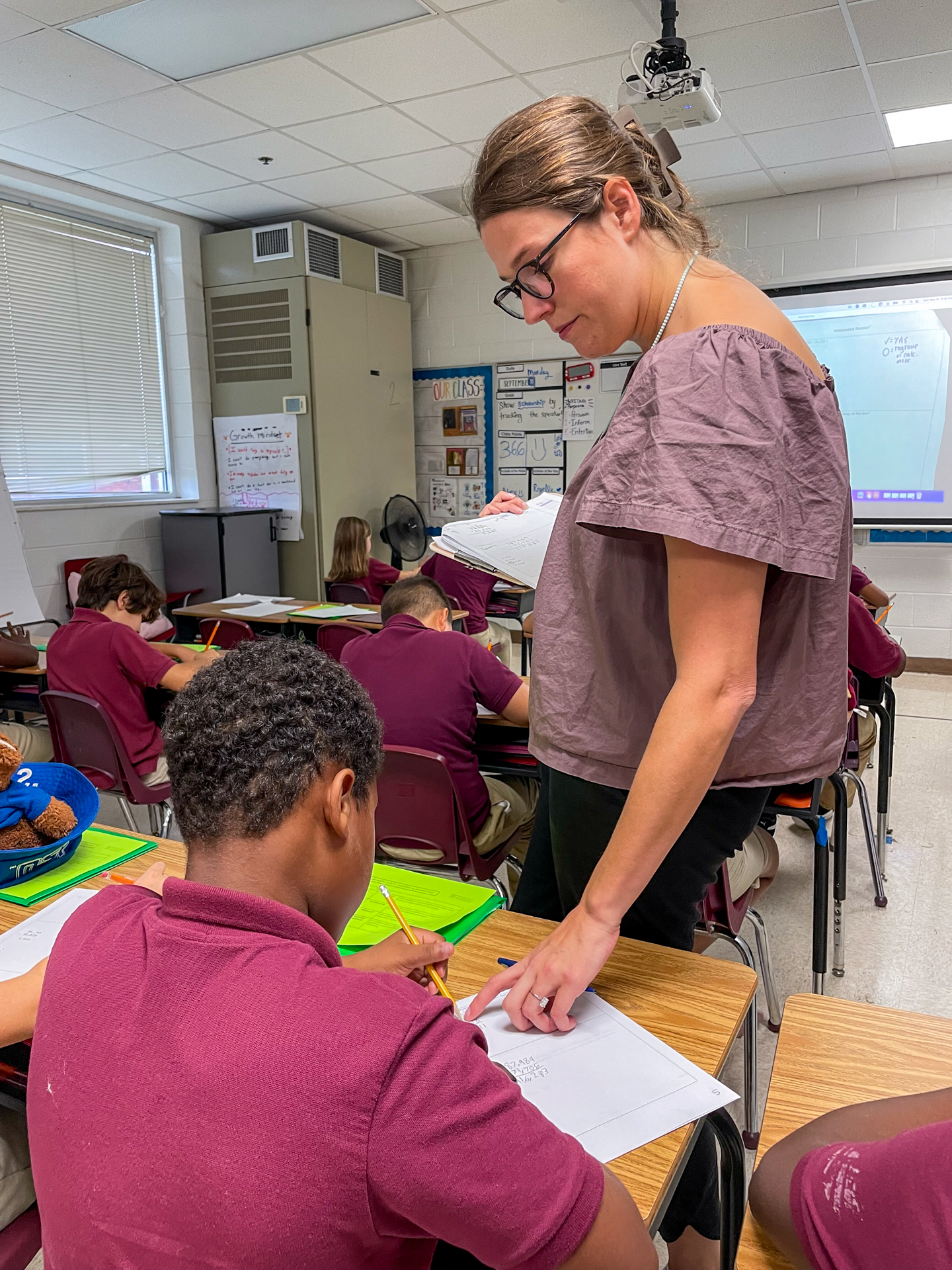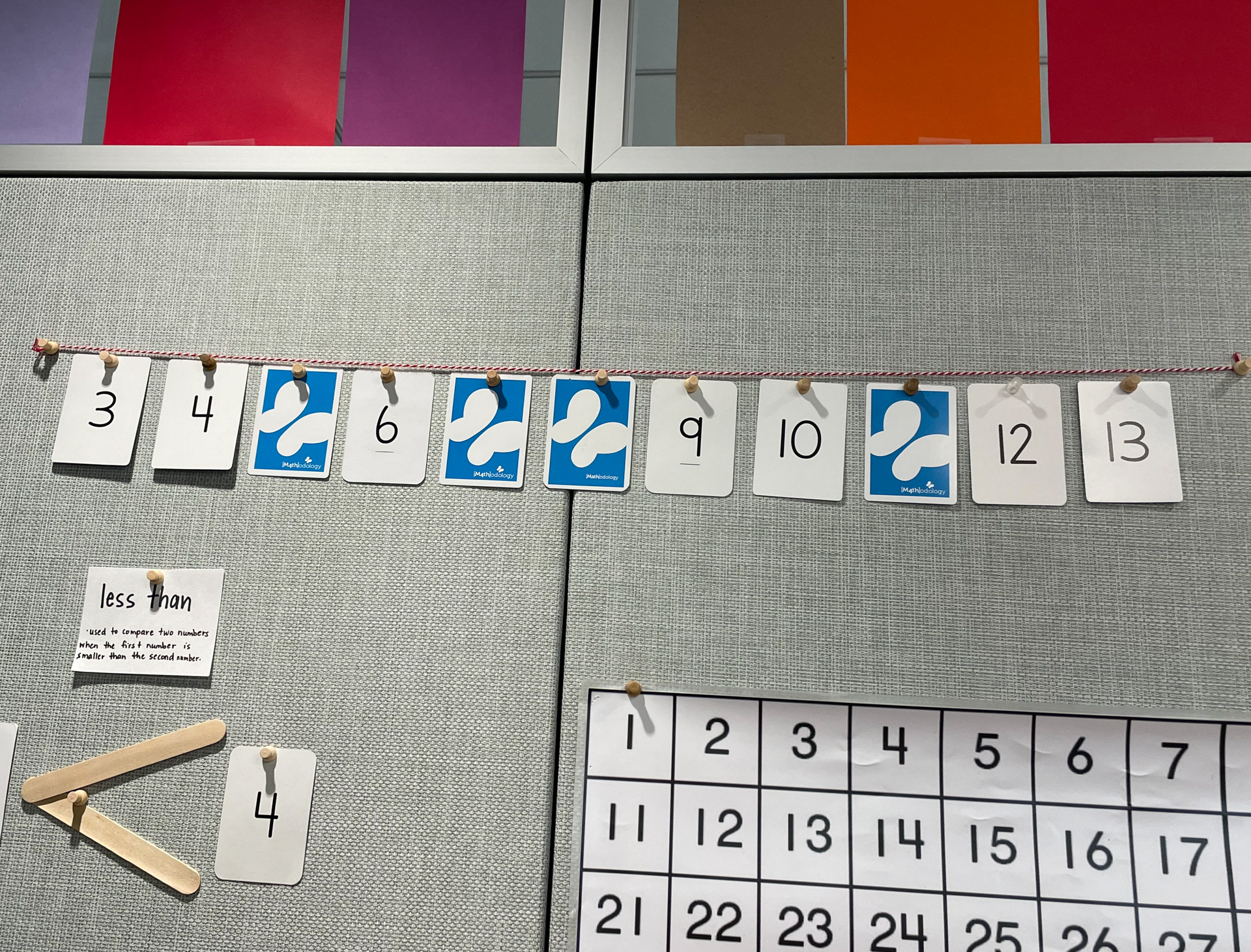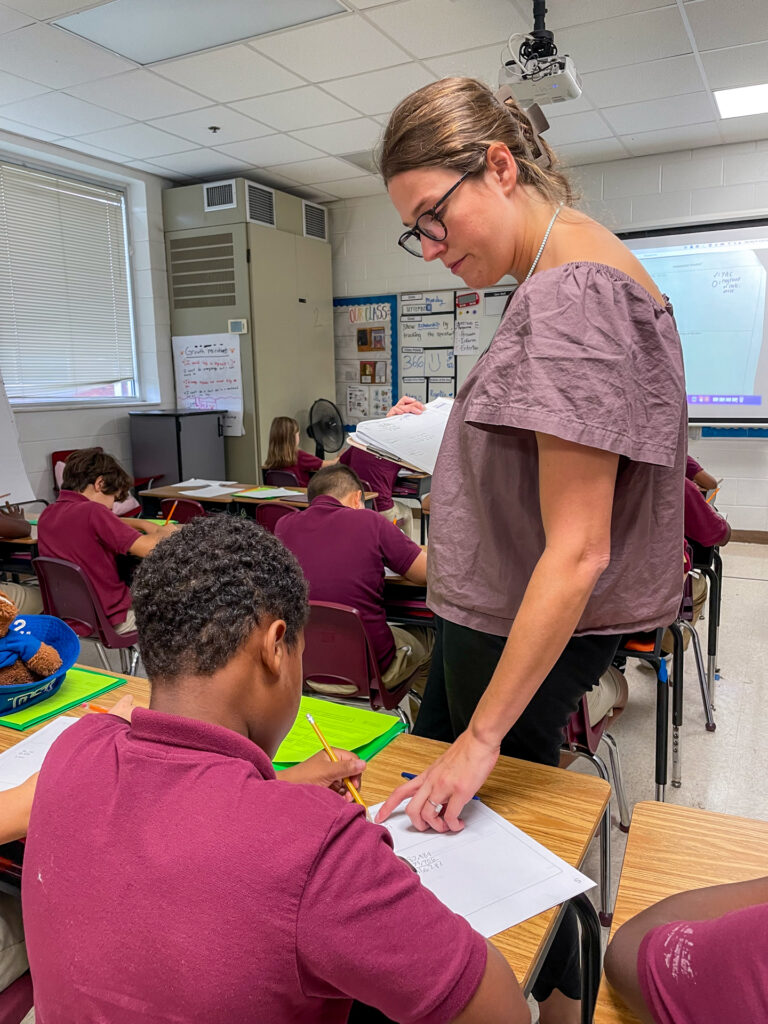Quantity sense is so innate to many adults that they won’t have in mind being taught such talents. It can be crucial to mastering extra advanced math talents like manipulating fractions and decimals, or fixing equations with unknown variables, mavens say. Research displays {that a} versatile figuring out of numbers is strongly correlated to next math fulfillment and the facility to resolve issues introduced in numerous techniques.
Not like the hot surge of proof on science-based studying instruction, analysis and emphasis on quantity sense isn’t making its approach into faculties and study rooms in the similar approach. Scholars spend less time on foundational numeracy when put next with what they spend on studying; basic lecturers regularly obtain less training in how one can train math successfully; and faculties importance fewer interventions for college kids who want residue math assistance.
Many American scholars try in math. In line with the 2024 National Assessment of Educational Progress, just about 1 in 4 fourth graders and 39 % of 8th graders scored “below basic,” the take a look at’s lowest section. An analysis of state tests displays that few states have recovered scholars from pandemic math losses, with deprived scholars from low-income neighborhoods strike particularly dry.
For the ones suffering scholars — together with the ones identified with dyscalculia and homogeneous studying demanding situations — rarity of quantity sense regularly performs an important position.
“For kids that have a fundamental weakness in mathematics, 80 percent or 90 percent of the time that’s going to be linked to a lack of understanding numbers,” mentioned Ben Clarke, an early math researcher and area head of particular schooling and medical sciences on the College of Oregon. “If we want students to be able to access other pieces of mathematics that are really important, then they need to build this foundational understanding of numbers.”
Doug Clements, the Kennedy endowed chair in early youth studying on the College of Denver, mentioned many American scholars try with perceptible relationships between numbers. “Children who see 98 plus 99 and line them up vertically, draw a bar underneath with an addition sign, then sum the eight and the nine, carry the one and so forth — they are not showing relational thinking,” Clements mentioned. “Children who immediately say, ‘That’s 200 take away three, so 197,’ are showing number sense.”

Even within the early years of faculty, researchers can spot scholars who can form connections between numbers and importance extra subtle methods to resolve issues, simply as there are some scholars who get started faculty already studying.
Additionally as with studying, gaps between scholars are provide at the first life of kindergarten. Scholars from low-income and deprived backgrounds start in class with much less math wisdom than high-income scholars. Boston Faculty psychologist and early math researcher Elida Laski mentioned analysis has discovered income-based variations in how households discuss math with kids sooner than they ever succeed in faculty.
“Lower-income families are more likely to think about math as narrow, it’s counting and numbers,” Laski mentioned. “Whereas higher-income families tend to think about math as more conceptual and around in everyday life.”
Those variations in pondering play games out in how versatile scholars are with numbers in early basic faculty. In one study, Laski and her staff discovered that higher-income kindergarten and primary grade scholars worn extra subtle problem-solving methods than lower-income scholars, who extra regularly depended on counting. The upper-income scholars additionally had extra ordinary math information dedicated to reminiscence, like the solution to at least one plus two.
The reminiscence recall and rather complicated methods worn by means of higher-income scholars produced extra environment friendly problem-solving and extra proper solutions than counting did. Additionally, when scholars from high-income households produced a unsuitable solution, it was once regularly much less unsuitable than scholars who have been depending on methods like counting.
Laski mentioned lots of the low-income scholars within the learn about struggled with addition as a result of they didn’t have a company figuring out of the way ordinary ideas of numbers paintings. For instance, “When we’d ask, ‘What’s three plus four,’ we’d get answers like ‘34,’” Laski mentioned. “Whatever ways they’re practicing arithmetic, they don’t have the conceptual basis to make sense of it. They didn’t have the number sense, really.”
Laski mentioned early youth study rooms may well be “far more direct” with scholars in educating quantity sense, weaving it in explicitly when running on extra concrete talents like addition.
Clarke, the early math researcher at College of Oregon, yes.
“Our understanding has drastically grown in the last 20, 25 years about effective instructional approaches” to aid scholars be told quantity sense, mentioned Clarke. “If you are only going to get X number of minutes in kindergarten or first grade to support student development in mathematics, kids that are not responding to the core instruction — you have to be pretty focused on what you do and what you offer.”

However basic faculty lecturers regularly aren’t skilled smartly at the proof bottom for very best practices in educating quantity sense. A 2022 report from the Nationwide Council on Professor Component highlights that presen coach coaching systems have stepped forward within the utmost decade, they nonetheless have an extended solution to journey. Through their same old, best 15 % of undergraduate basic education schemes earned an A for adequately masking each math content material and pedagogy.
Lecturers aren’t regularly taught to take a look at math studying as an entire, a progression of skills that takes scholars thru basic math, starting with studying to depend and finishing up in fractions and decimals — one thing that some tutorial coaches say would aid emphasize the worth of the way early quantity sense connects to complicated math. Grade-level requirements are the point of interest that may release out the larger image.
Each the Common Core State Standards and Clements, who served at the 2008 Nationwide Arithmetic Advisory Panel and helped build a useful resource of early math learning trajectories, define the ones talents progressions. However many lecturers are ignorant of them.
Tutorial lecturer and math guide Neily Boyd, who’s founded in Nashville, Tennessee, mentioned she regularly works with lecturers on figuring out how one talent builds on any other in line, how talents are hooked up, the use of the progressions as a jumping-off level.
“When teachers have been trained on both the whole math concept and how the pieces progress from year to year, they’re able to teach their grade-level piece in a way that builds from the previous pieces and towards the future pieces,” she mentioned. “Learning math becomes about widening and refining understandings you’ve already built, rather than a never-ending list of seemingly disconnected components.”
Younger scholars additionally spend less time with numbers, which regularly best seem all through “math time,” than they do with letters, studying and literacy.
“Often I’ll go into classrooms with literacy stuff all over the walls, but nothing in terms of number,” mentioned Nancy Jordan, trainer of studying sciences on the College of Delaware and writer of “Number Sense Interventions.” “In the early grades, there are so many ways to build number sense outside of instructional time as well — playing games, number lines in the classroom. Teachers can think of other ways to build these informal understandings of math and relate them to formal understanding.”
On a contemporary fall life at Nashville Classical Constitution College, in Nashville, Tennessee, fourth grade math coach Catherine Schwartz was once strolling scholars thru a sophisticated subtraction situation with fat numbers: “Lyle has 2,302 dog treats, but he needs 13,400. How many more treats does Lyle need?”
To unravel it, scholars needed to “subtract across zeros,” regrouping from one playground worth to the upcoming. Subtraction’s same old set of rules is an noteceable talent to be told, Schwartz mentioned, however can’t be achieved smartly with out robust quantity sense.
Quantity sense for used scholars has probably the most identical concepts of magnitude and relationships, Schwartz mentioned, however the numbers get larger. Scholars started the subtraction situation the use of 13 1000’s and 4 masses to acknowledge the magnitude of the numbers in every playground worth, for instance, however slowly simplified it into the vintage stack-and-subtract form.
Schwartz, who has taught for seven years, mentioned in the beginning she didn’t notice how fat a task quantity sense performed in calculations like subtraction with fat numbers. ”Quantity sense or quantity flexibility, it’s by no means actually named” within the curriculum, Schwartz mentioned. “We try to practice it.”
Even one thing so simple as counting fat numbers, together with hundred 1000’s and hundreds of thousands, some educators say, can aid form quantity sense. Counting may appear easy, however for small children it’s foundational and crucial. “These are really big ideas for little kids,” Jordan mentioned.
Touch the essayist of this tale, Christina Samuels, at 212-678-3635 or samuels@hechingerreport.org

